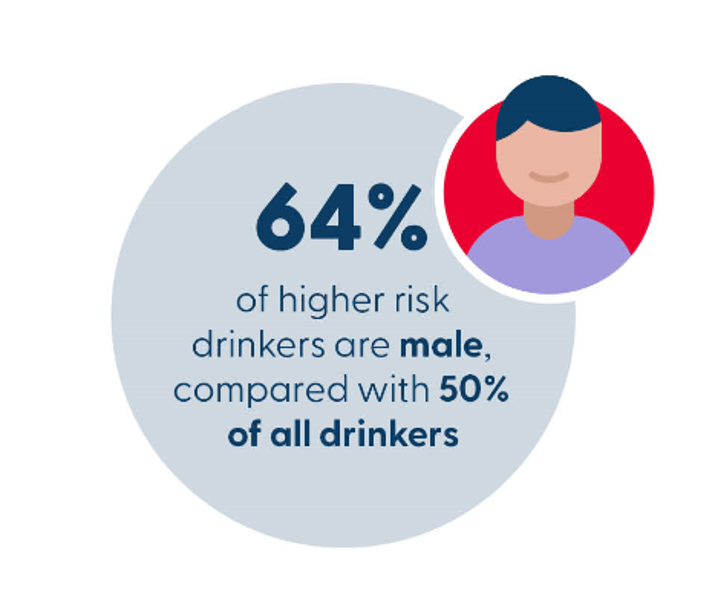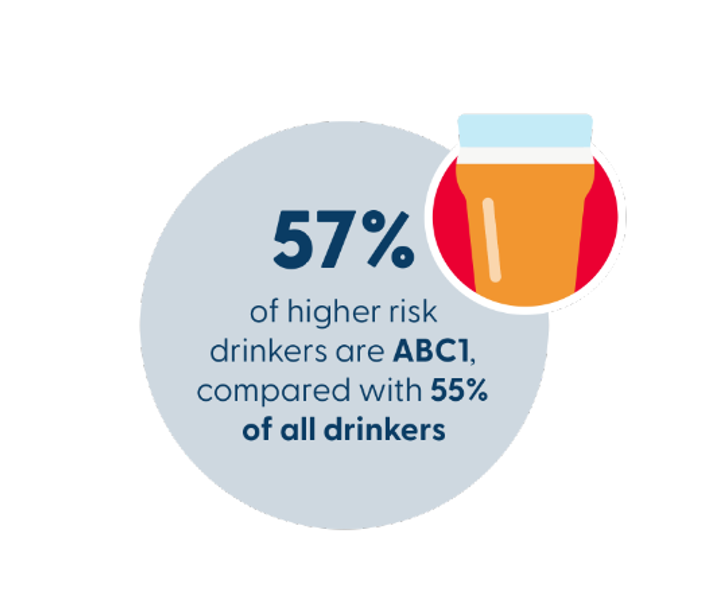Drinkaware Monitor 2020: Drinking and the coronavirus pandemic
Every year Drinkaware commissions a survey to track and understand the nation’s drinking. This year we wanted to understand the impact the pandemic has had on the nation's drinking.
In a year unlike any other, Drinkaware wanted to understand the impact the pandemic has had on the nation’s drinking, and particularly, whether any changes in work caused by the pandemic had impacted on drinking.
The findings from this survey are alarming. They demonstrate the impact the pandemic has had on many of our lives, and particularly the disruption experienced by those working during this time. Many drinkers turned to alcohol to fill newly free time, relieve worry or uncertainty, or just to alleviate boredom.
Of particular concern, drinkers who already drank at higher levels were more likely to have increased their drinking as lockdown struck, and also to continue drinking at higher levels through the pandemic.
Higher risk drinkers are more likely to be male, from ABC1 social groups and aged 45-54 than other drinkers.
In the early stages of the pandemic (late March to June), when lockdown restrictions were at their height, 26% of all drinkers report drinking more than normal. This falls to 15% as restrictions eased. 11% of drinkers report drinking at higher than normal levels throughout the pandemic. This implies that some drinkers were able to moderate their drinking habits as the pandemic progressed, but others are continuing to drink at increased levels and could be forming habits that will be harmful in the long term.
This is particularly true for drinkers who already drink at ‘higher risk’ levels (as defined by AUDIT-C). In the earlier part of lockdown, 46% drank more than normal, which fell to 31% in the later parts. 24% of higher risk drinkers drank more than normal throughout the pandemic.
Quantity of alcohol consumed
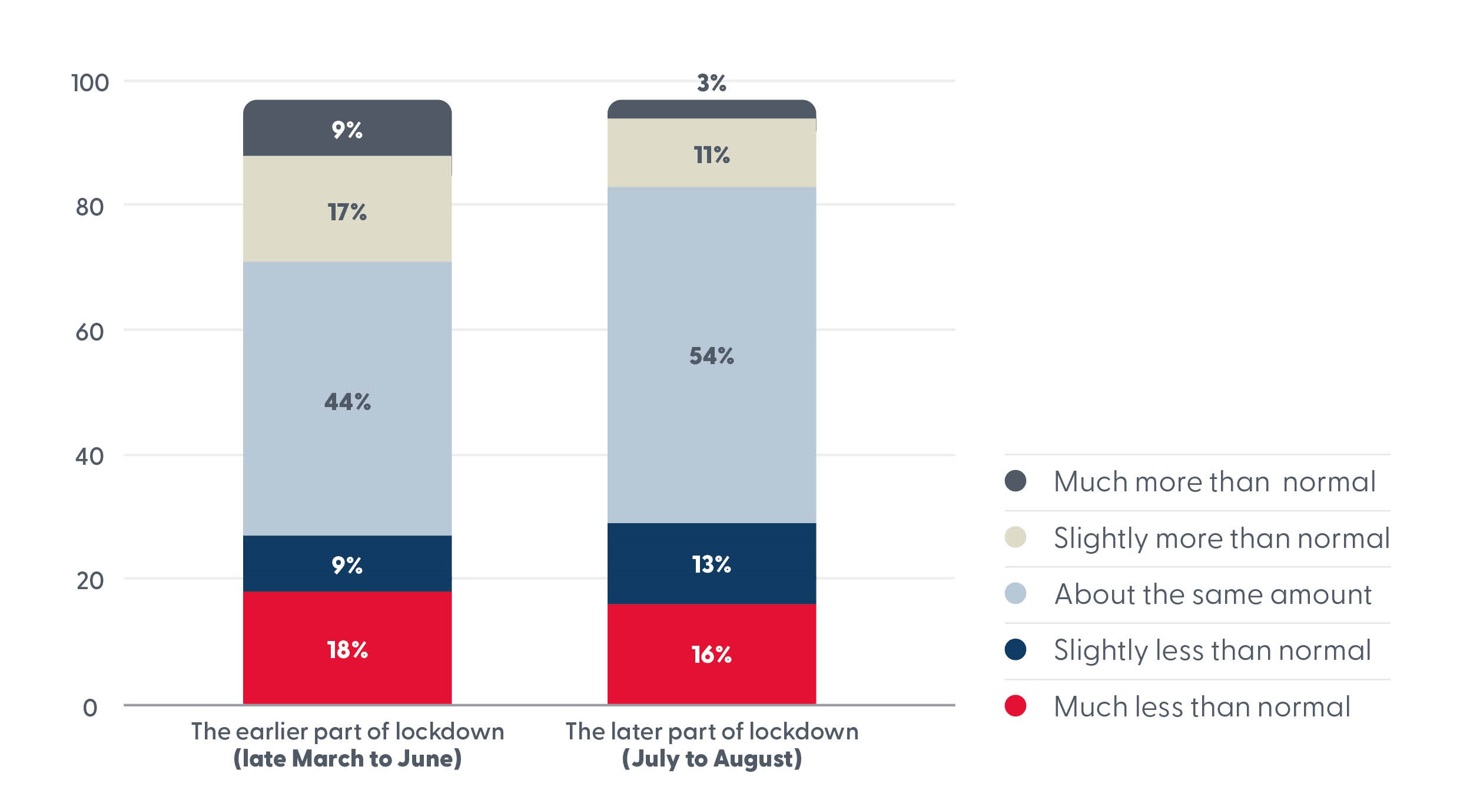
Reasons for drinking more during the pandemic included having more time available, and less structure to the days/weeks.
Those whose work situation has been disrupted by the pandemic were more likely to have drunk more through the pandemic, including those who had been made redundant or in the consultancy process (17% compared with 10% of those not affected by redundancy).
We also found that drinking during the pandemic restrictions was also related to other unhealthy behaviours, including increased smoking (if they were also smokers) and eating less healthily.
Drinking more
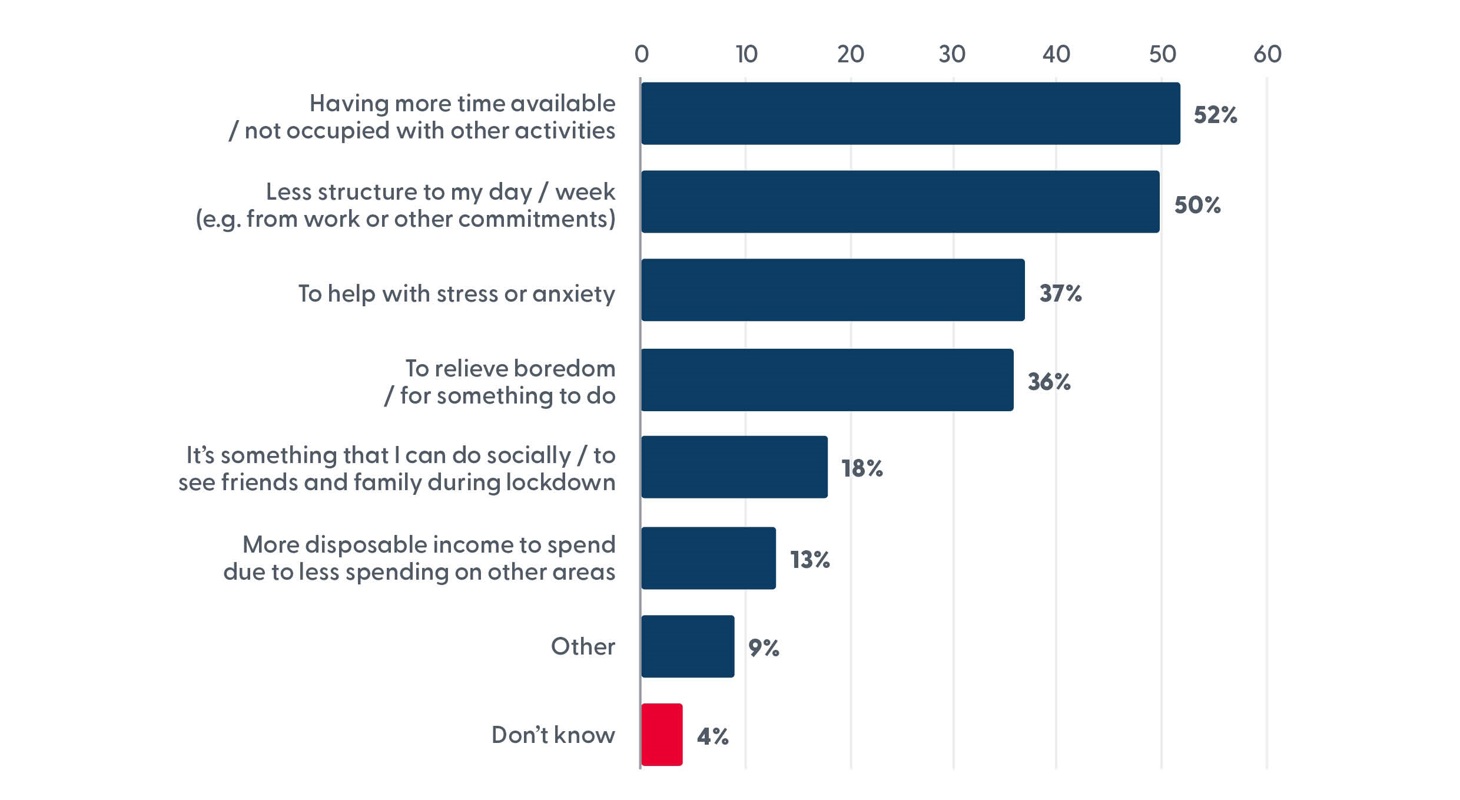
21% of drinkers intend to cut down their drinking as lockdown restrictions ease.
Among respondents who are planning to cut down on their alcohol consumption, there is a sense that drinking habits in lockdown are situational and temporary. In particular, those who had changes to circumstances and also increased their consumption during lockdown more likely to intend to cut down as restrictions ease
Drinking intentions
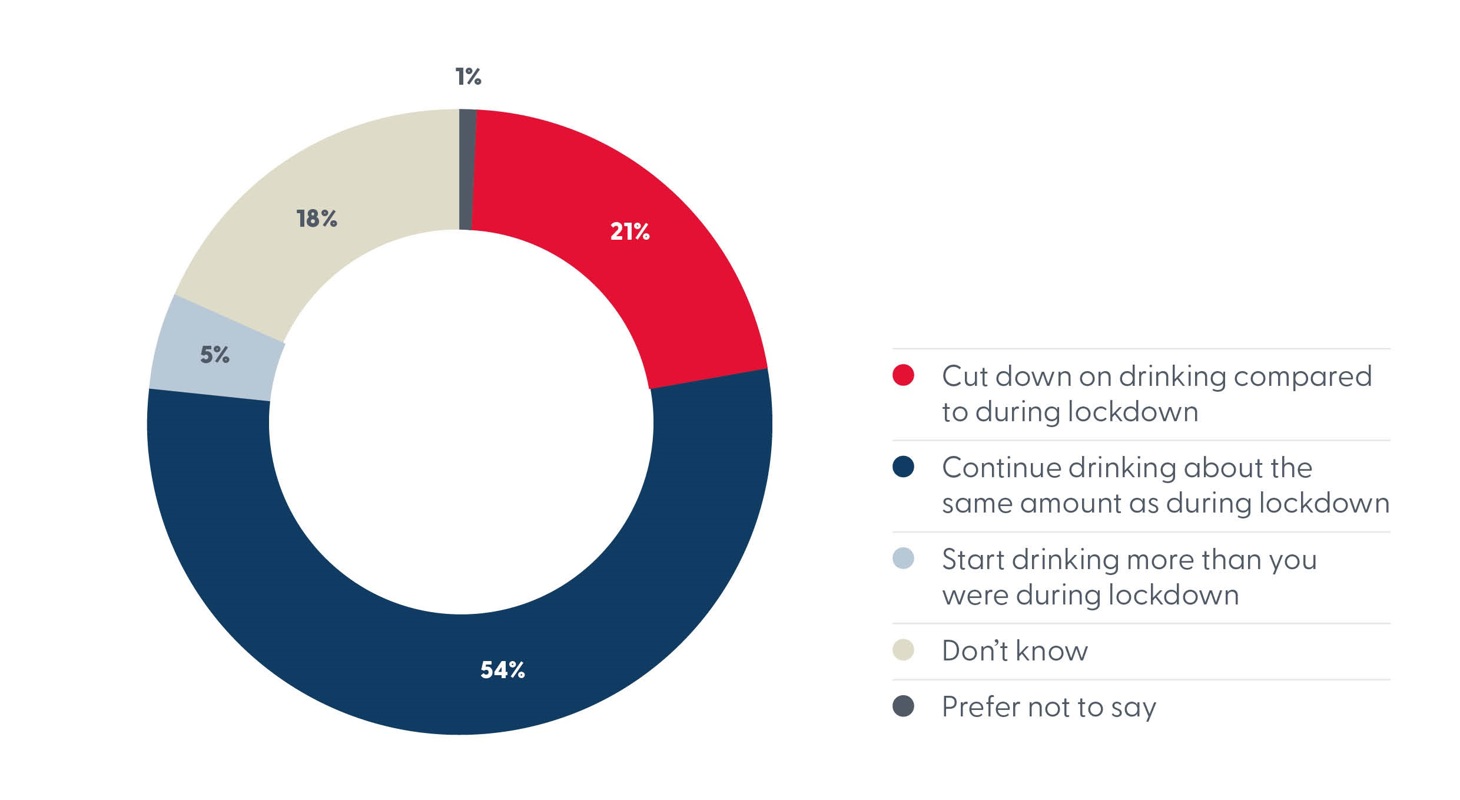
We intend to publish the data from this survey in 2021. Until then, interested researchers who wish to conduct independent analysis are welcome to contact the research team on research@drinkaware.co.uk.
The survey included questions on:
The main objectives of this research were to:
Drinkaware commissioned YouGov to undertake the research on our behalf. They interviewed a representative sample of 9,046 UK adults aged 18 to 85 online, between 27 August and 15 September 2020. Data was weighted to be representative of the UK adult population (aged 18 to 85) according to gender, age, social grade, and region.
